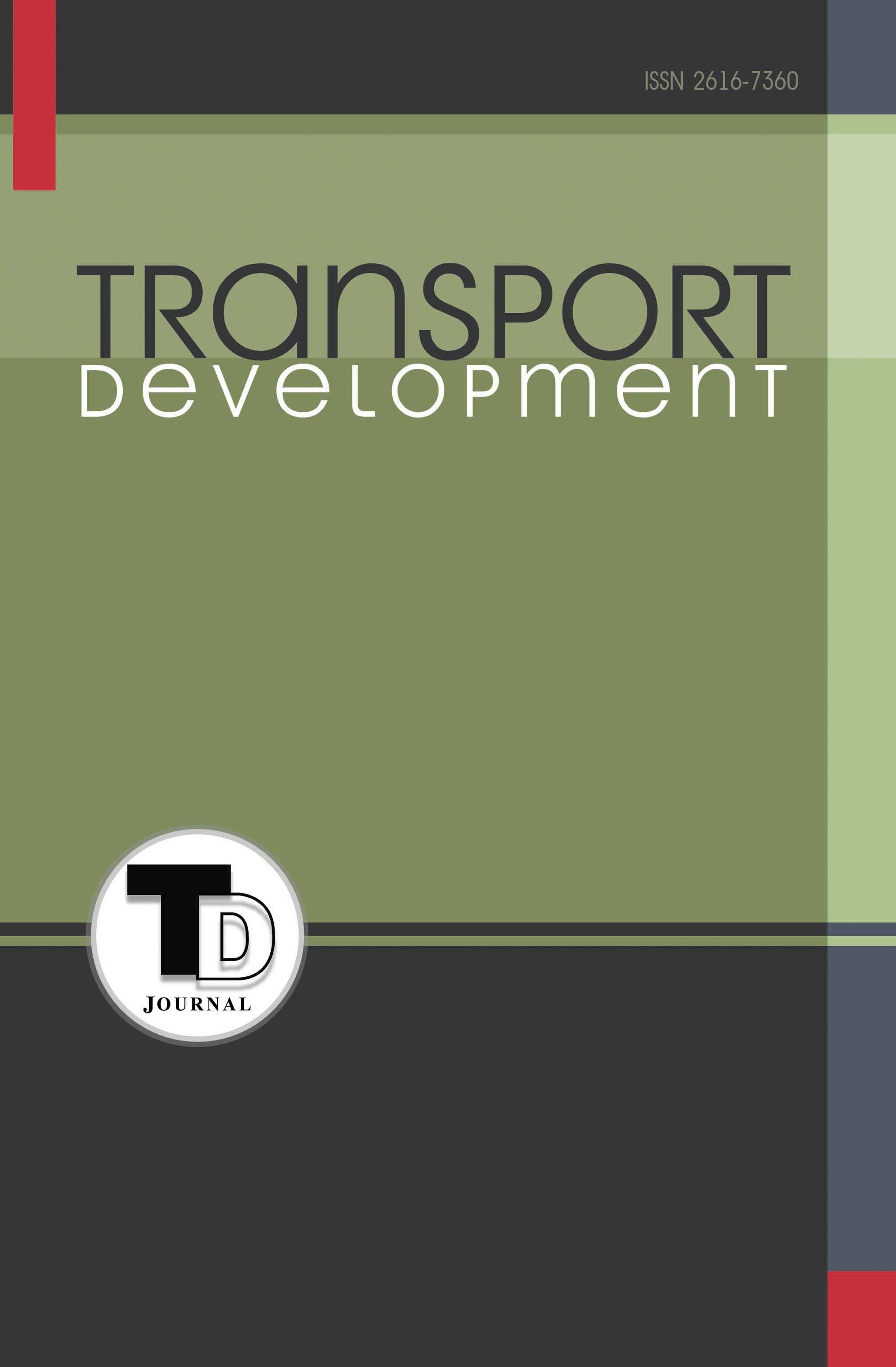ANALYSIS OF THE INFLUENCE OF THE LIMIT LEVELS OF VIBRATION ON THE RESIDUAL LIFE OF SHIP MACHINES AND MECHANISMS
Abstract
Introduction. The high efficiency of the transition to the system of maintenance of ship technological equipment based on the actual condition is based not only on reducing the terms and costs of maintenance, but also on the exclusion of unjustified repairs. This leads to an increase in the machine units’ reliability. The transfer of the ships of the Navy of Ukraine for maintenance and repair in their current condition requires the availability of diagnostic equipment for various machines and mechanisms of the ship on board. Purpose. To theoretically substantiate and experimentally verify the limit levels of vibration of ship machines and mechanisms with rotating rotors. The implementation of this goal involves solving the problem of finding the function between the limit levels of vibration and the "fatigue" of bearings for ship machines and mechanisms with rotating rotors and rolling bearings with a resource of 10–12 thousand hours. Results. A method of vibration diagnostics of the pumping unit is proposed, which does not require information about the vibration norms, their tactical and technical data, the state of the unit at the time of diagnosis, and is applicable, as the conducted studies have shown, to all types of pumps with an electric drive. Vibration surveys of ship machines and mechanisms carried out by the authors for 10 years, as well as the results of data analysis by other authors, allow us to state that during the operation of ship machines and mechanisms, it is advisable to conduct vibration surveys and, if necessary, rebalancing the rotors, at least once in 2–3 months. The operation of ship pumping units is accompanied by vibration, which negatively affects the resource of their work. The most loaded (from a mechanical point of view) are bearing units, which, as a rule, determine the ship machines and mechanisms service life. Conclusions. This approach makes it possible to develop simple diagnostic devices consisting of two or three channel spectrum analyzers, an arithmetic unit for calculation and a signaling unit, as well as an analysis unit in which automatic identification of vibration frequencies and diagnosis will be carried out. A special dependence was developed for the practical substantiation of the limit levels of vibrations of various ship machines and mechanisms. The method of determining the residual resource of ship machines and mechanisms in operational conditions is proposed. A promising further continuation in this direction is the detailing of the calculation of vibration norms for various types of ship machines and mechanisms, the development of methods for calculating and forecasting the residual resource, the instrument implementation of this approach.
Downloads
References
2. Гижко Ю.І., Мислович М.В. Елементи теорії та питання практичного застосування систем вібродіагностування рухомих вузлів електричних машин. Технічна електродинаміка. 2015. № 2. С. 45–56. URL: http://nbuv.gov.ua/UJRN/TED_2015_2_8.
3. Ship Machinery Condition Monitoring using Vibration Data through Supervised Learning / C. Gkerekos et al. The International Conference of Maritime Safety and Operations (MSO), Glasgow, UK, October 2016. 8 p. URL: https://www.researchgate.net/publication/324223114.
4. Vibration Limits for Rotating Machinery / A. Lifson et al. Mechanical Engineering. 1987. June. P. 60–63. URL: https://www.researchgate.net/publication/294266058.
5. Singh S., Vishwakarma M. A Review of Vibration Analysis Techniques for Rotating Machines. International Journal of Engineering Research & Technology (IJERT). 2015. Vol. 04. № 03 (March). P. 757–761. DOI: 10.17577/IJERTV4IS030823ю
6. Свиридов В.І., Фальченко О.П. Діагностування суднового устаткування при використанні різних моделей вібрації. Прикладні питання математичного моделювання. 2019. Т. 2. № 2. С. 78–90. https://doi.org/10.32782/2618-0340/2019.2-2.7.
7. Система для акустичного діагностування вузлів теплоенергетичного обладнання / О.І. Красильніков та ін. Системи обробки інформації. 2015. Вип. 6 (131). С. 107–110. URL: http://nbuv.gov.ua/UJRN/soi_2015_6_27.
8. Свиридов В.І. Методика діагностичного контролю технічного стану насосного обладнання суднових енергетичних установок : автореф. дис. ... канд. техн. наук : 05.05.03. Київ : Київ. держ. акад. вод. трансп. ім. гетьмана Петра Конашевича-Сагайдачного, 2013. 20 с.
9. Свиридов В.І., Попов І.М. Дослідження підшипникових вузлів насосного обладнання та механізмів через вібраційні показники. Вісник Херсонського національного технічного університету. 2017. Т. 1. № 3 (62). С. 338–344. URL: http://nbuv.gov.ua/UJRN/Vkhdtu_2017_3(1)__61.
10. Берегун В.С., Красильніков О.І. Дослідження чутливості коефіцієнта ексцесу діагностичних сигналів для контролю стану електротехнічного обладнання. Технічна електродинаміка. 2017. № 4. С. 79–85. URL: http://nbuv.gov.ua/UJRN/TED_2017_4_13.
11. Свиридов В.І. Діагностування електричних агрегатів та енергетичного обладнання методом третьоктавного аналізу вібрації. Вісник Херсонського національного технічного університету. 2015. № 3 (54). С. 643–648. URL: http://nbuv.gov.ua/UJRN/Vkhdtu_2015_3_124.
12. Губаревич О.В. Вібраційна діагностика електроприводівв системах гідроелектростанцій. Гідроенергетика України. 2021. № № 3–4. С. 61–64. URL: https://uhe.gov.ua/sites/default/files/2021-12/15.pdf.
13. Діагностування підшипників кочення допоміжних машин електровоза з використанням параметричної моделі та спектра обвідної вібрації / Е.Д. Тартаковський та ін. Вісник Національного технічного університету України «Київський політехнічний інститут». Серія «Машинобудування». 2016. № 3 (78). С. 12–18. http://dx.doi.org/10.20535/2305‐9001.2016.78.79374.
14. ISO 17359:2003. Condition monitoring and diagnostics of machines. General guidelines.
15. ISO 13380:2002. Condition monitoring and diagnostics of machines. General guidelines on using performance parameters.
16. ISO 13379:2003. Condition monitoring and diagnostics of machines. General guidelines on data interpretation and diagnostics techniques.
17. ISO 10816. Mechanical vibration. Evolution of machine vibration by measurements on non- rotating parts. Part 1–5.
18. ISO 7919. Mechanical vibration of non-reciprocating machines. Measurements on rotating shafts and evolution criteria. Part 1–5.
19. ISO 10816-6:1995. Mechanical vibration. Evaluation of machine vibration by measurements on non-rotating parts. Part 6 : Reciprocating machines with power ratings above 100 kW.
20. ISO 13373-1:2002. Condition monitoring and diagnostics of machines. Vibration condition monitoring. Part 1 : General procedures.
21. ISO/DIS 13373-2. Condition monitoring and diagnostics of machines. Vibration condition monitoring. Part 1 : Processing, presentation and analysis of vibration data.
22. ISO/DIS 15242-1. Rolling bearings. Measuring methods for vibration. Part 1 : Fundamentals.
23. ISO 13374-1:2003. Condition monitoring and diagnostics of machines. Data processing, communication and presentation. Part 1 : General guidelines.





